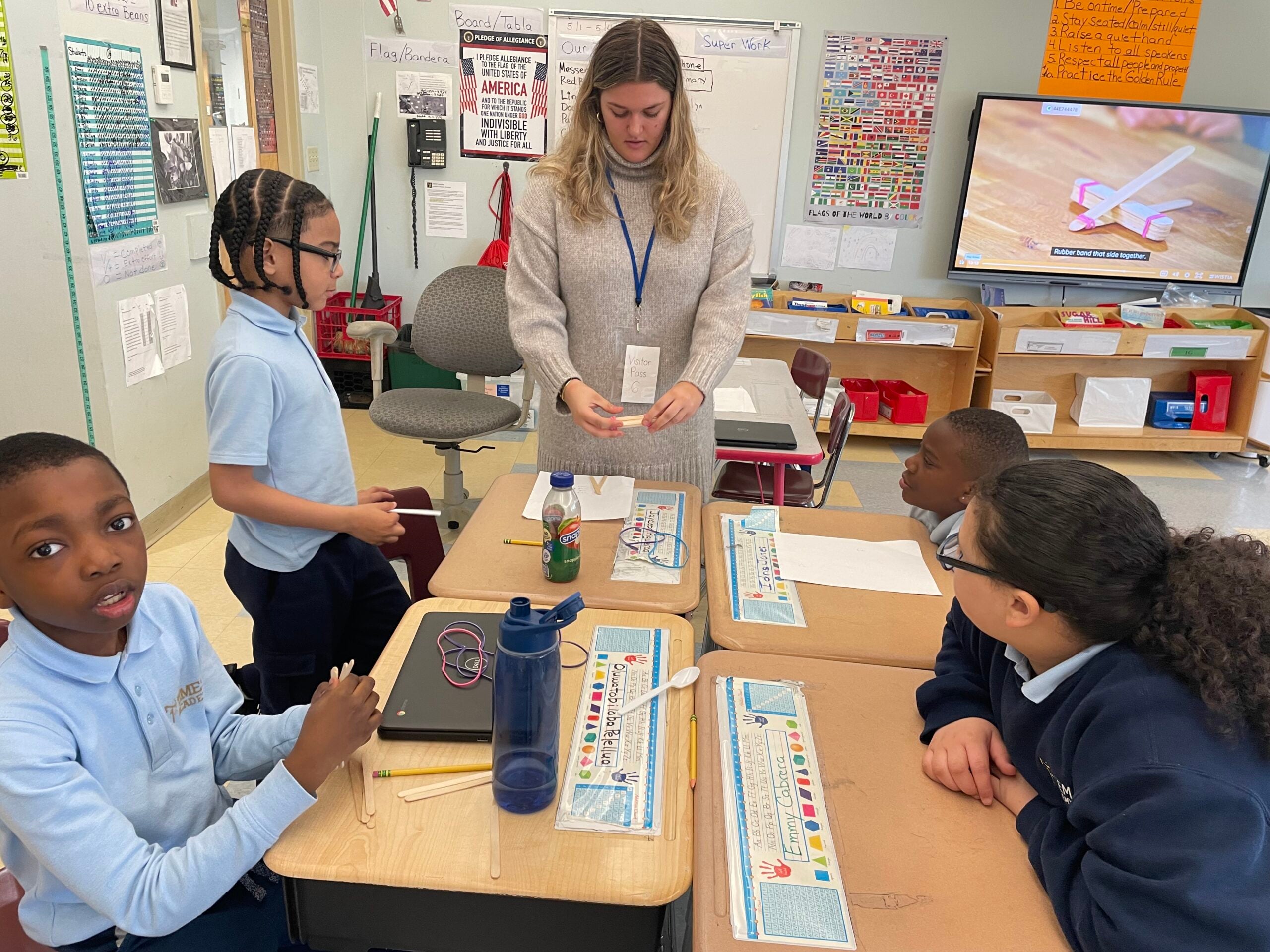Using CEEDARs 4R process for transformation, three classroom teachers and one Professor engaged in Lesson Study to reimagine a Mathematics Education Practicum for prospective sophomore teachers as a Providence College – Times² Academy partnership. Participants conducted rigorous research into what core research-to-practice methods would bring the most leverage and improve the student’s skill set and understanding of teaching and learning. Each teacher tested these practices, and the resultant analysis led us to a wholly revised practicum.
In June of 2022, after our spring practicum ended, Dr. Anthony Rodriguez (Associate professor) contacted Ms. Traci Gagnon, Ms. Tanya Gaulin, and Ms. Monique Walmsley (clinical field educators) at Times² Academy to collaborate in developing the syllabus for the math education course for undergraduate students at Providence College, with a connected math education practicum. CEEDAR supported our work this academic year.
In September, we had our first work session to brainstorm and think through how students learn to teach math developmentally, from easy-to-access skills to more challenging skills and concepts. We used a plus delta model to deconstruct the strengths and changes needed to improve the course. With two years of data working with PC practicum students, the team quickly found the need to engage more fully in CCSSM standards of mathematics practices. We identified these areas of professional growth for our instructional focus.
From there, we drafted an outline of the semester for teaching the standards of mathematical practices based on grade-level expectations. We researched and aligned each standard to scholarly articles for seminar use.
Once the syllabus was complete, we created a model lesson incorporating a mathematical standard to teach in each class. We co-planned this activity and, with the support of leadership, who provided substitutes, organized a lesson study to teach across three classes with specific differentiation in each classroom to meet the unique needs of the students. We observed each lesson, scribed, and then debriefed after each observation to fine-tune our expectations for the practicum students. We used specific feedback to improve the model lesson. We applied the lessons learned in a second round of revision and refinement to the model lesson and across the syllabus as a whole.
In January, we tested out our model lesson again, this time in front of the new Practicum Students to set the standard for the semester. This first move in our practicum had tremendous leverage in realigning our work to best practices and clarifying expectations for a practicum centered on problem solving and inquiry. We aimed to set professional expectations and demonstrate interactive teaching and best practices. Students have taught lessons in our classrooms where they implement the Standards for Mathematics Practices in the Common Core each week, embedded in the new syllabus.
Some of the immediate improvements have been a commitment to anchoring the student’s teaching to the Standards for Mathematics practices, providing more opportunities for writing on and discussing what it means to teach in this era as a professional, and the mathematics-specific practices needed for generating new ideas for strength based, active lessons.

